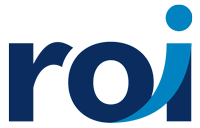Healthcare IT Practice
Revenue Cycle Optimization
Maximize Revenue Potential: Unleash the Power of Revenue Cycle Optimization.
How we can help
Are you leaving money on the table?
Uncover hidden revenue.
Optimize your revenue cycle and drive growth with our expert-led Revenue Cycle Optimization service. Our team will analyze your processes, identify opportunities for improvement, and provide customized solutions to streamline operations and increase revenue.
Real results.
Our team has deep experience in improving the revenue cycle for hospitals and health systems across the nation. Here are a few highlights from engagements that ROI employees have led during their careers.

GA Health System
Through focusing on areas identified during initial assessment, and then efforts to ensure appropriate coding based on improved documentation, the client turned a $40,000 investment into a $400,000 improvement in net revenue the first year.

CA Medical Center
Focused efforts on admission processes identified as not best practices during assessment saw a reduction in denials. The focused project of $20,000 showed a return on investment of $60,000 in the first three months with an annualized one year return of $240,000.

NY Rural Hospital
Focused efforts on ABN process ($30,000 investment) resulted in immediate return of $10,000 per month in reduction of medical necessity denials. One year return of $120,000.
Related Insights
Learn more
Frequently asked questions.
Healthcare revenue cycle optimization can lead to increased efficiency in the claims process, improved patient data accuracy, timely reimbursement from payers, reduced administrative costs, and better communication between providers and payers. Additionally, it can also lead to improved cash flow, better patient satisfaction, and more accurate financial reporting. Finally, it can also provide healthcare organizations with timely insights about their revenue performance so they can identify areas for improvement and take corrective action.
Healthcare organizations can optimize their revenue cycle by improving their billing processes and systems, streamlining claims adjudication, reducing denials and appeals, increasing patient responsibility collections, and enhancing coding accuracy. Additionally, they should focus on data management and analytics to identify trends and areas of improvement in order to maximize revenue.
Healthcare organizations can reduce their denial rates by ensuring accurate billing, providing clear communication to patients about what is covered by insurance, and reviewing their denials regularly to identify root causes. Additionally, they should focus on improving patient data collection and accuracy, as well as strengthening payer relationships by providing timely responses to inquiries. Finally, they can use automated tools such as robotic process automation (RPA) to identify opportunities for improvement and help streamline the claims process.
Technology can help streamline the claims process by providing automated tools such as robotic process automation (RPA) to help manage and process claims. Additionally, it can improve data accuracy by collecting patient information from multiple sources in a secure and efficient manner. Finally, technology can also provide healthcare organizations with timely insights about their revenue cycle performance so they can identify areas for improvement and take corrective action.
Some of the challenges associated with healthcare revenue cycle optimization include inaccurate patient data, inefficient claims processing, and inadequate communication between providers and payers. Additionally, there is often a lack of transparency regarding how much money is due to the provider from each claim they submit. Finally, reimbursement delays can also be a major issue for healthcare organizations, as this can significantly impact their bottom line.
Revenue cycle optimizations often pay for themselves. By increasing efficiencies, reducing denials and appeals, improving patient data accuracy, and collecting payments more quickly, healthcare organizations can often recoup the cost of implementing a revenue cycle optimization system. Additionally, some healthcare organizations may qualify for grants or other forms of funding to help finance their project. It is important to speak with a financial specialist in order to determine the best financing option for your organization.
Healthcare IT Leadership
Meet ROI's Team

Scott Hein
President & Founder
As one of the founders of ROI, Scott is dedicated to delivering the highest quality services to ROI’s clients. Since 1999, he has led the continued vision of quality deliverables, teamwork and value.

Chris Quimby
Partner, HIT Strategy and Services
Chris leads ROI’s Healthcare IT practice. He has extensive experience with a wide array of healthcare technologies supporting today’s multi-facility healthcare environments.

Jeff Tennant
EVP, Healthcare IT Strategy & Services
Jeff offers more than 20 years of experience in IT, healthcare, and consulting. He manages several of ROI’s key strategic customer relationships while serving as a thought leader.
DAVID SCHLESINGER, SVP of Business & Finance Systems @ Seasons Hospice

